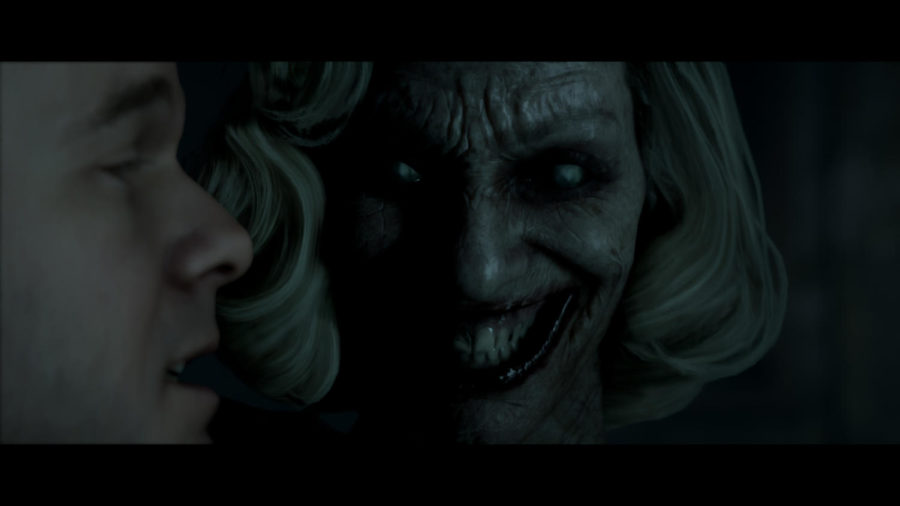- Limelight
- Limelight / Digital
- Limelight / Reviews
- Limelight / Visual Media
- Limelight / Visual Media / Videogames
Review: ‘The Dark Pictures: Man of Medan’ offers high tension decision making
Courtesy of Supermassive Games
“The Dark Pictures: Man of Medan” is an interactive drama/horror survival game and successor to the popular “Until Dawn.”
September 4, 2019
Supermassive Games’ decision-based survival horror game “The Dark Pictures Anthology: Man of Medan” was one of the most highly anticipated games of 2019 as it is the spiritual successor to it’s 2015 game “Until Dawn.”
“Man of Medan” has the same formula of “Until Dawn” in that it follows a cast of multiple young adult characters, of which the player switches in between according to the game’s script. Each of the characters have their own unique personalities and relationships to one another. The characters are put into harrowing and life-threatening situations that the player must make quick-decisions on that will either save or kill the character they are currently playing as or another character they have built a relationship with.
Similar elements between “Man of Medan” and “Until Dawn” can be seen through the use of premonitions that the characters can experience through framed pictures and totems found in each of the games, respectively.
Also making a return are the breaks from the main third person-action gameplay to first person-relaxed conversations with foreboding, cryptic characters. In “Until Dawn,” this character, mainly known as “The Analyst,” interacted with the player by asking them questions about their deepest fears, which would then become elements in the game itself.
In “Man of Medan,” “The Curator” takes this place but only serves to offer optional hints to the player instead of directly affecting game play.
“Man of Medan” builds up the tension between the characters and the environment very well; almost too well. The opening scene that takes place in the 1940’s, post-World War II, serves to introduce the main setting of the game that will be experienced later.
The ratio of build-up to actual horror in “Man of Medan” leaves a bit to be desired. The World War II opening scene as well as the introductory chapters where we meet our five characters drag on a bit too long, not leaving enough time to fully enjoy the horrors that occur in the main setting of the infamous WWII urban legend, the “S.S. Ourang Medan” ghost ship.
Once the player finally gets the characters on the ship, the quality of the game does increase however. Like “Until Dawn,” the choices the player makes when playing as each character really do matter.
If the player misses even a single quick-time-event, wherein they must press a specific button on their controller in a very limited space of time, a character can be killed on the spot and is thus missing from the rest of the story.
This game promises that all decisions are final and that you will have to live with the outcomes of them, and it certainly delivers on this promise.
One of this game’s shining points is its ability to make the player extremely stressed.
The best mechanic in “Man of Medan” that causes stress is its “Keep Calm” sections. These occur when the character being played is in a situation where they cannot make any noise or movement, possibly due to a nearby lurking enemy and the player has to press a certain button in rhythm to the character’s heart beat in order to not be noticed by the enemy.
I found myself holding my breath during these sections because of the amount of stress they put on me. The fear of this monster, kidnapper or hallucination being merely feet away and discovering and possibly killing you because you didn’t press a button at the right time provides a very impressive claustrophobic effect.
The other arguably best part of “Man of Medan” is its multiple endings. Depending on who the player was able to keep alive as well as the moral choices they made during gameplay have a heavy impact on which ending is received.
These range from what the internet calls the “worst” and “true” endings as well as every possible alternative in between.
A brand new element that “Man of Medan” brings is its ability to be played cooperatively online with other live players. In this game mode, other people will be playing as a different character and making decisions for themselves that will affect the story just as your own choices do.
So is “Man of Medan” better than “Until Dawn”? I’m going to have to say no, with the biggest complaint being its short run-time of about 3-4 hours while “Until Dawn” had about 10-12 hours. Despite this, “Man of Medan” is certainly worth playing and, even more importantly, re-playing as to fully experience the alternate choices you did not see the first time.
Due to this being just the first game in the “Dark Pictures Anthology,” I still look forward to seeing what other horror stories come from Supermassive Games.
Final Verdict: 7/10







